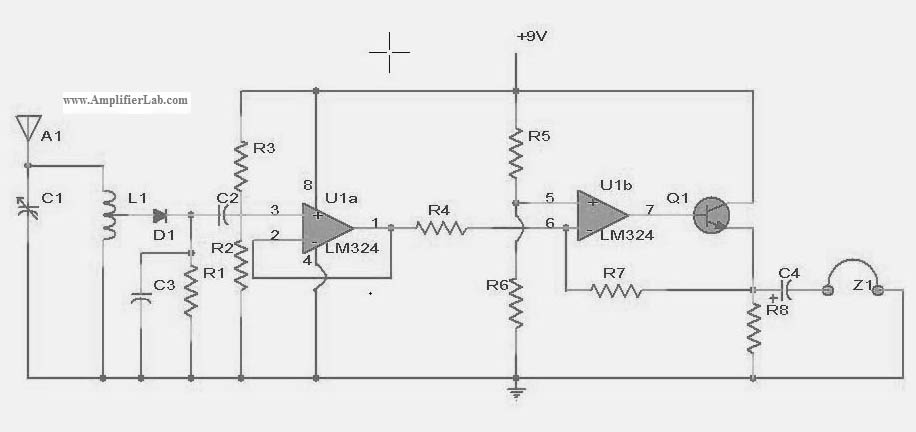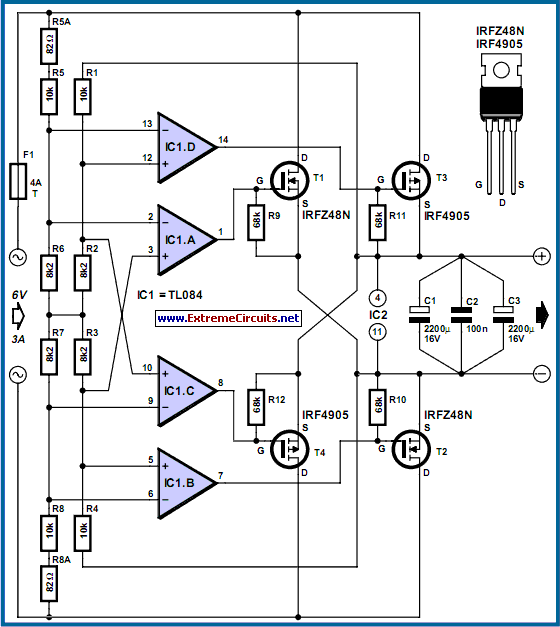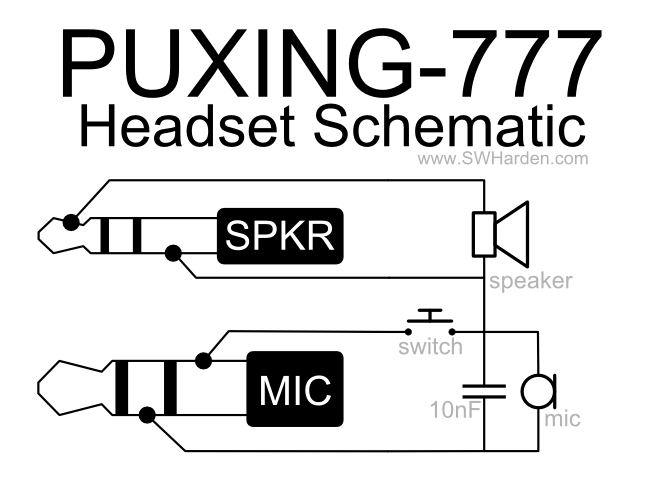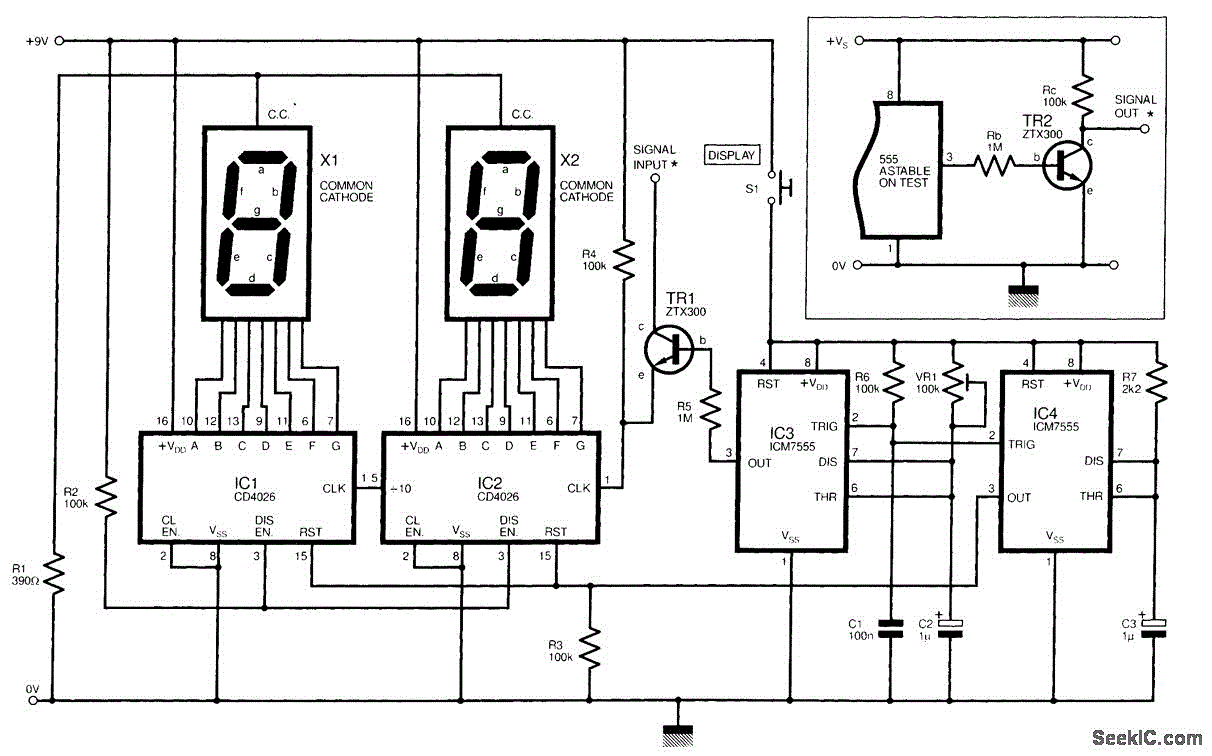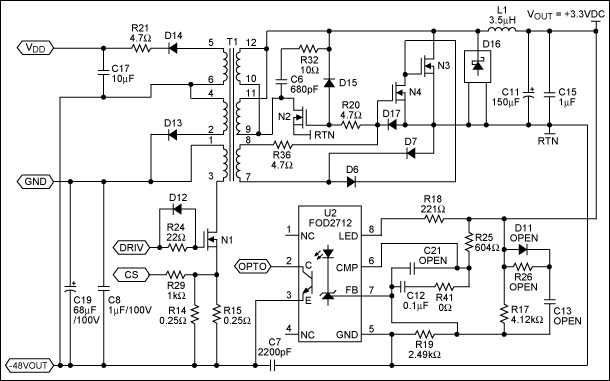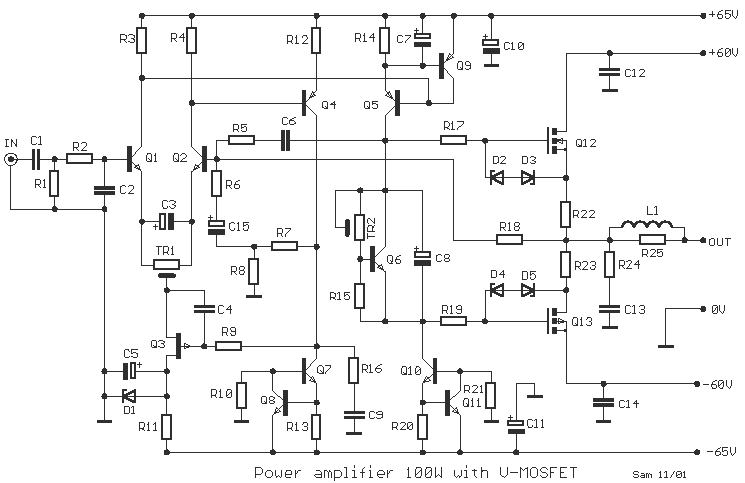
Power frequency noise filter PC822 schematic
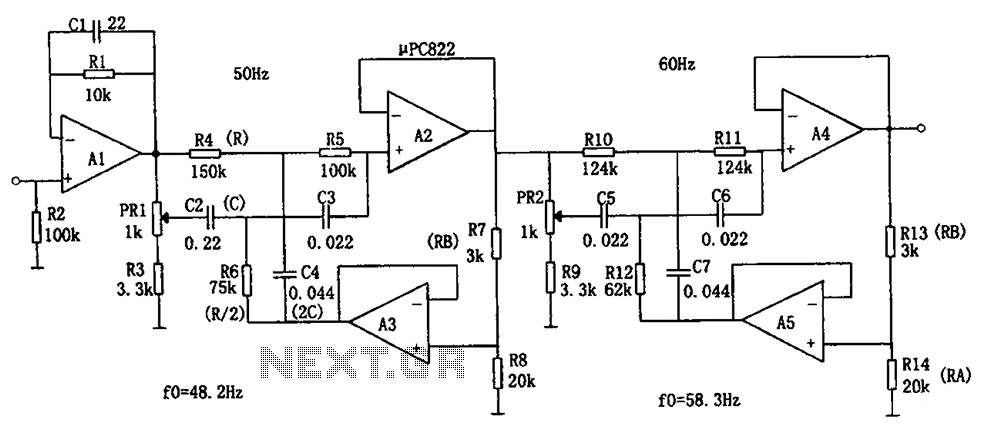
The circuit depicted in the figure is a frequency power supply noise filter circuit, specifically a double-T filter. It is designed to amplify weak signals, such as those from sensors, while filtering out mixed 50Hz (or 60Hz) power supply frequency noise. Using only an RC element to construct this filter typically results in a low Q value and a broadband attenuation characteristic. However, the incorporation of operational amplifiers with positive feedback enhances the Q value. The Q value can be expressed as Q = Q/(1 + K), where K is defined as RA/(RA + RB). By adjusting the coefficient K, the Q value can be increased. The resonant frequency of the circuit is given by f0 = 1/(2πRC), with the positive feedback elements represented as R/2 and 2C. To account for the effects of capacitive decentralization, the resonant frequency is set lower, and the potentiometers PR1 and PR2 are used to adjust the frequency to either 50Hz or 60Hz. When a 50Hz (or 60Hz) sinusoidal voltage is applied, the filter can be adjusted via PR to minimize the output voltage. This filter is capable of handling input power supply noise that is not a sine wave, which may introduce high-frequency components. The low-pass filter can effectively filter out higher harmonics, such as the 3rd, 5th, and 7th odd harmonics present in AC power.
The double-T filter circuit is an effective solution for reducing power supply noise in electronic systems, particularly in applications where precision is critical, such as sensor signal processing. The design utilizes operational amplifiers to improve the Q factor, thus enhancing the selectivity of the filter. The ability to adjust the resonant frequency using potentiometers allows for fine-tuning based on the specific frequency of the noise present in the power supply.
In practical applications, the circuit can be integrated into various electronic devices to mitigate interference from the 50Hz or 60Hz power lines. The design's reliance on both resistive and capacitive components ensures that it can effectively handle a range of frequencies, while the feedback mechanism permits dynamic adjustments to the filter characteristics based on the operating environment.
When implementing this filter, consideration should be given to the layout and component selection to minimize parasitic capacitance and inductance, which could adversely affect performance. Additionally, the choice of operational amplifiers should align with the desired frequency response and gain characteristics to achieve optimal filtering results. Overall, this circuit serves as a robust solution for enhancing signal integrity in the presence of power supply noise. As shown in FIG frequency power supply noise filter circuit. The circuit is a double-T filter, can be used to amplify (such as sensors) weak signal, to mixed 50Hz (or 60Hz) pow er supply frequency noise will be filtered out. If using only the RC element composed of such filter, the Q value is generally low, and the attenuation characteristic having broadband characteristics. Using op amps and add positive feedback can improve the Q value. Let Q value at this time is Q, then Q Q/(1 a K), where, K RA/(RA + RB). Changing the coefficient K can make Q value increases. The resonant frequency of the circuit is fo 1/2 RC, positive feedback element of R/2 and 2C. Taking into account the characteristics of using a capacitive decentralization, the resonant frequency to be set lower, then the potentiometer PR1 and PR2 to adjust the frequency to 50Hz (or 60Hz).
When adjusting the input 50Hz (or 60Hz) sinusoidal voltage, filter it through PR adjust the output voltage to a minimum. With this filter, if the input power supply noise is not a sine wave, there will be a high-frequency component by the filter.
AC power is generally higher harmonics 3,5,7 and other odd harmonics can be filtered by low-pass filter access to these harmonics.
The double-T filter circuit is an effective solution for reducing power supply noise in electronic systems, particularly in applications where precision is critical, such as sensor signal processing. The design utilizes operational amplifiers to improve the Q factor, thus enhancing the selectivity of the filter. The ability to adjust the resonant frequency using potentiometers allows for fine-tuning based on the specific frequency of the noise present in the power supply.
In practical applications, the circuit can be integrated into various electronic devices to mitigate interference from the 50Hz or 60Hz power lines. The design's reliance on both resistive and capacitive components ensures that it can effectively handle a range of frequencies, while the feedback mechanism permits dynamic adjustments to the filter characteristics based on the operating environment.
When implementing this filter, consideration should be given to the layout and component selection to minimize parasitic capacitance and inductance, which could adversely affect performance. Additionally, the choice of operational amplifiers should align with the desired frequency response and gain characteristics to achieve optimal filtering results. Overall, this circuit serves as a robust solution for enhancing signal integrity in the presence of power supply noise. As shown in FIG frequency power supply noise filter circuit. The circuit is a double-T filter, can be used to amplify (such as sensors) weak signal, to mixed 50Hz (or 60Hz) pow er supply frequency noise will be filtered out. If using only the RC element composed of such filter, the Q value is generally low, and the attenuation characteristic having broadband characteristics. Using op amps and add positive feedback can improve the Q value. Let Q value at this time is Q, then Q Q/(1 a K), where, K RA/(RA + RB). Changing the coefficient K can make Q value increases. The resonant frequency of the circuit is fo 1/2 RC, positive feedback element of R/2 and 2C. Taking into account the characteristics of using a capacitive decentralization, the resonant frequency to be set lower, then the potentiometer PR1 and PR2 to adjust the frequency to 50Hz (or 60Hz).
When adjusting the input 50Hz (or 60Hz) sinusoidal voltage, filter it through PR adjust the output voltage to a minimum. With this filter, if the input power supply noise is not a sine wave, there will be a high-frequency component by the filter.
AC power is generally higher harmonics 3,5,7 and other odd harmonics can be filtered by low-pass filter access to these harmonics.
